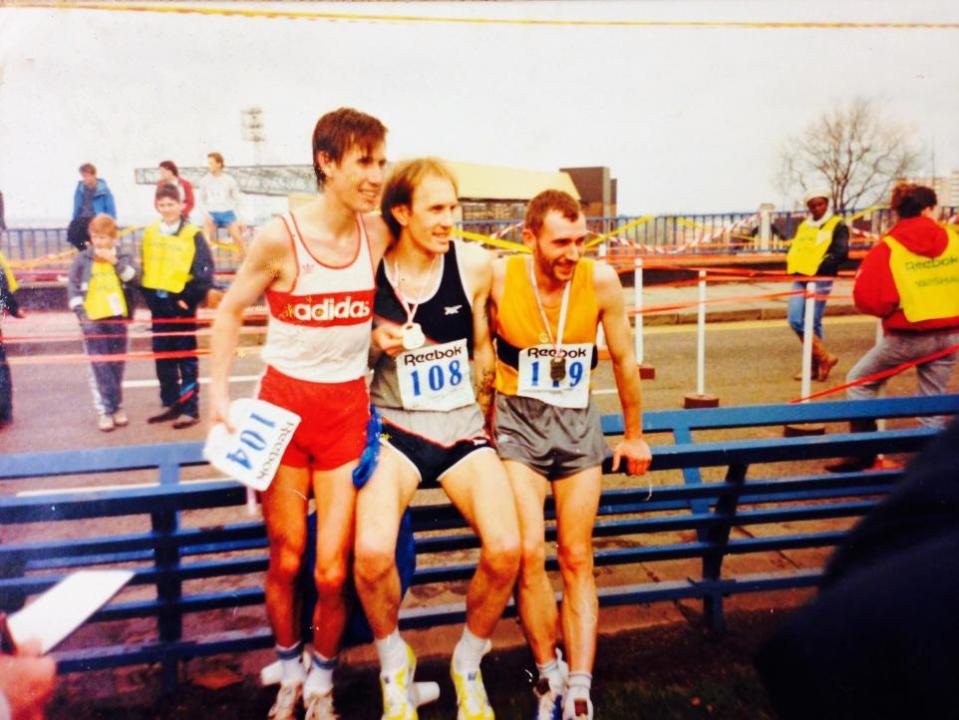Neil Featherby: It's crunch time for anyone running a spring marathon

Here we are and April has most certainly now arrived.
So, what does that mean for many runners?
Winding down to run a marathon of course, be it Brighton (this Sunday), Manchester, London or of course nearer to home in Norfolk.
All those long winter weeks of putting the miles in should now be put to bed whilst preparing to taper towards the big day.
If anything, these next few days/weeks should be just as important as the key weeks and key long runs because if you get it wrong now then all the hard work of the last few months may not see you perform to your very best.
Despite regularly being asked the best way to taper mileage, my answer is what is right for one person may not necessarily be right for everyone else.
At the same time, I think I only ever got it right once and that was when being given just 10 days’ notice to run in the Berlin marathon in 1986.
The one thing that I do know though, is that all the hard work should now be done, and this is not a month for catching up.
If you are going to toe the line irrespective of whether you have had brilliant preparations or of course like Mark (Armstrong) setbacks, then as the once great athlete and Norwich-based Tony Settle would say “if you toe the line, then you declare yourself fit”.
In other words, if you stand on the start line it is what it is and don’t look for excuses afterwards if you don’t perform to the level you were looking for, particularly if the training prior to race day didn’t go as smoothly as hoped for.
I always tell people to be happy in the knowledge that they have ticked all the boxes.
Then providing you are happy, and the goals are realistic, subject to not starting out too quickly or of course other ailments which can be common with marathon running (stomach issues), it should just be a question of ticking one mile off after another.
Pace of course is so important, especially when it comes to running 26.2 miles, so getting it bang on really is key to a best performance and not what you were ‘on for’ at halfway.
MORE: Love running? Join the Run Anglia Facebook group here
As I have said many times before, the most over used quote post marathons is ‘I was on for...’
One other thing, which is just as important during the last few days of course is diet and whilst there are now so many supplements for runners to consume, back in the day we had to make sure the foods we ate going into the race ensured that our glycogen levels were at a max.
Even with today’s supplements, this is still very important.
Like many others at the time, I experimented with what was known as ‘carbo loading.’
This could take many forms from the very severe running of 20 miles at pace just seven days before race day, so as to deplete your muscle and liver glycogen, followed by eating foods with a very low carbohydrate content for the next three to four days before then consuming carbohydrate rich foods whilst resting up.
However, and amongst my experimentation with carbo loading diets which definitely did not always work, I was lucky enough to have a discussion with a very well-known and prominent UK marathon runner Trevor Hawes from Leicester who along with Professor Ron Maughan, a top sports medical/scientist and nutritionist, had come up with a better plan which was less severe when it came to pre marathon carbo loading.

For those who remember Trevor, they will also know that he would run marathons on consecutive weekends usually winning them in 2 hours 20 mins or just below.
This technique basically meant doing three specific runs during a 24-hour period, five days before race day whilst eating very little carbohydrates before then shifting to a diet rich in carbs for the final three to four days.
This was also something which I then shared with Paul Evans just before his second place in the New York Marathon in 1995 (2:11:05) and has since told me that he used this procedure for all his marathons afterwards including his London marathon third place (2:10:40) and Chicago Marathon win and PB in 1996 in 2 hours, 8 mins and 52 secs.
I doubt anyone reading this will get anywhere near Paul’s amazing marathon times, irrespective of diet or supplements, but what I will say is all the very best to everyone who is now counting down the days to their April marathon.
I must also send out best wishes to everyone taking part or involved with the organisation of this Sundays Trowse 10k, the third race in this year’s Sportlink Grand Prix Series.
Incidentally, it was 37 years ago today (April 5th, 1987) when I won the Wolverhampton Marathon, ironically managing to break away from Trevor (Hawes) of all people with five miles to go.

 Yahoo Sport
Yahoo Sport 





































